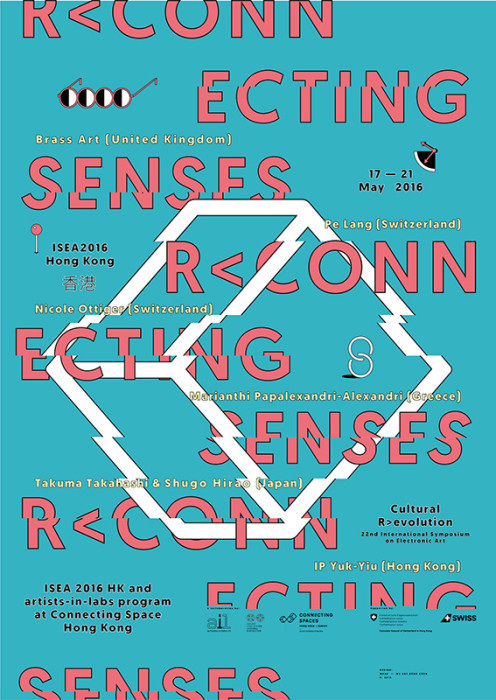17 – 21 May 2016
Exhibition

Exhibition Opening: 17 May 2016 (Tuesday), 8:30pm
Date: 17 – 21 May 2016
Time: 11:00am – 7:00pm
Venue: Connecting Space Hong Kong (Directions)
Description
Co-organised by Connecting Space Hong Kong, artists-in-labs program (ail) and ISEA 2016 Hong Kong, this exhibition is a laboratory by way of discussions and interactions – participating artists will join the curatorial team in acoustic performances, a “making-of” artist talk and a workshop surrounding the element ‘perception’.
Oscillating between kinetic mechanics, material collages and poetic acoustics, a selected group of artists shares an interest in experimental concepts and transdisciplinary encounters. This result is an exhibition-turned-laboratory enriched by discussions, interactions and performances. Artistic practices, aesthetic strategies and situated knowledge are exchanged between the artists and then shared with ISEA participants and exhibition visitors.
Artists
- Brass Art (UK)
- Ip Yuk-yiu (Hong Kong)
- Pe Lang (Switzerland)
- Nicole Ottiger (UK / Switzerland)
- Marianthi Papalexandri-Alexandri (Greece)
- Takuma Takahashi + Shugo Hirao (Japan)
Curatorial Team
Co-curators: Irène Hediger, artists-in-labs; Harald Krämer and Kyle Chung, ISEA 2016 Hong Kong
Curatorial Assistant: Flurin Fischer, artists-in-labs
Opening Performances
Untitled II – a live-performance of mechanical instruments by Marianthi Papalexandri-Alexandri and Pe Lang. The performance builds on modified membraphones developed by Papalexandri-Alexandri as main instruments utilizing Lang’s motor-activated devices. The work creates and explores a soundscape of mechanical-produced long sustained sounds and textures with organic character and without any post-processing.
Shooting Moments – an art experiment on perception by Nicole Ottiger. The artist invites visitors to put their own perception skills to test in this art experiment – to sample a selected art image being flashed at the edge of eyesight, to the right or left visual field only and to paint/ draw what they perceived after a single visual exposure (up to 4 exposures allowed), whose paintings will become part of the running exhibition.

Supported by

